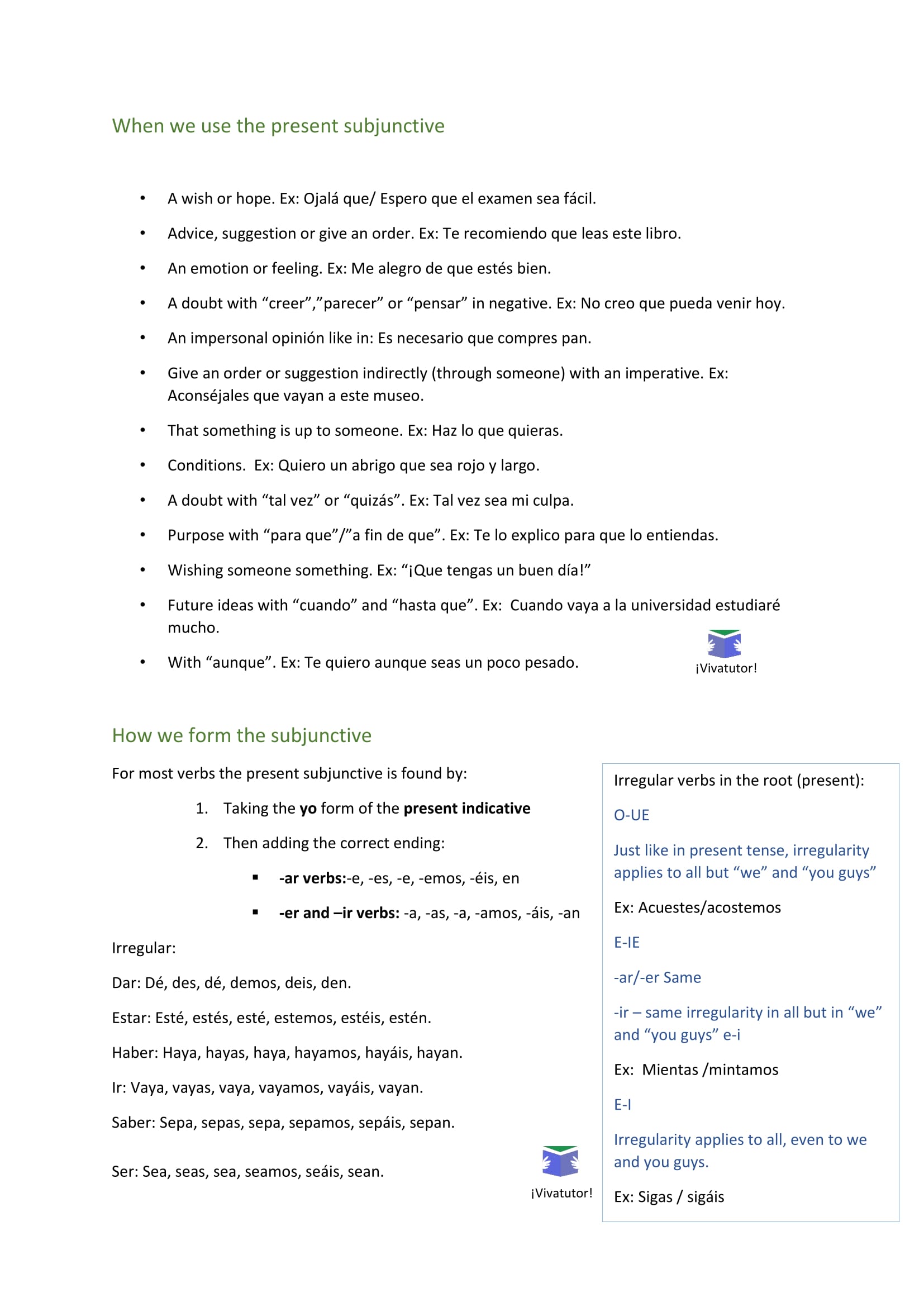Present subjunctive. I hope...
Think of the subjunctive as another reality, where we talk about the hypothetical things that could happen or the things we wished were different.
Today we talk about the first one, the things that could or could not happen, the present subjunctive.
Note: If you prefer a video, scroll down. Also, scroll down to download your cheat sheet.
Present subjunctive
Is created with the form "I do" (present), taking out the -o ending and adding:
If it's an AR verb: e,es,e,emos,éis,en.
If it's an ER or IR verb: a,as,a,amos,áis,an.
So basically it's like a cross of the present tense endings.
Ex: hablar - habl- hablemos.
No es posible que hablemos aquí -It's not possible that we speak here.
Ex: Comer - com - comáis.
Os recomiendo que comáis en ese restaurante -I recommend you eat in that restaurant.
Irregular verbs:
Dar: Dé, des, dé, demos, deis, den.
Estar: Esté, estés, esté, estemos, estéis, estén.
Haber: Haya, hayas, haya, hayamos, hayáis, hayan.
Ir: Vaya, vayas, vaya, vayamos, vayáis, vayan.
Saber: Sepa, sepas, sepa, sepamos, sepáis, sepan.
Ser: Sea, seas, sea, seamos, seáis, sean.
Ex:
Espero que Juan vaya a la fiesta - I hope Juan goes to the party.
Me fascina que seas tan terco -It fascinates me that you're so stubborn.
When to use present subjunctive:
• A wish or hope. Ex: Ojalá que/ Espero que el examen sea fácil.
• Advice, suggestion or give an order. Ex: Te recomiendo que leas este libro.
• An emotion or feeling. Ex: Me alegro de que estés bien.
• A doubt with “creer”,”parecer” or “pensar” in negative. Ex: No creo que pueda venir hoy.
• An impersonal opinión like in: Es necesario que compres pan.
• Give an order or suggestion indirectly (through someone) with an imperative. Ex: Aconséjales que vayan a este museo.
• That something is up to someone. Ex: Haz lo que quieras.
• Conditions of something unknown. Ex: Quiero un abrigo que sea rojo y largo.
• A doubt with “tal vez” or “quizás”. Ex: Tal vez sea mi culpa.
• Purpose with “para que”/”a fin de que”. Ex: Te lo explico para que lo entiendas.
• Wishing someone something. Ex: “¡Que tengas un buen día!”
• Future ideas with “cuando” and “hasta que”. Ex: Cuando vaya a la universidad estudiaré mucho.
• With “aunque”. Ex: Te quiero aunque seas un poco pesado.
Check the post on the imperfect subjunctive if you want and we'll have a look at the differences between them:
Differences between present and imperfect subjunctive:
If there's a "que" right before the verb in subjunctive it's present tense. Unless the sentence is in past tense, then the present subjunctive becomes imperfect subjunctive as we saw above.
Present subjunctive is translated to English in normal present tense, imperfect subjunctive is translated to English in past tense.
With present subjunctive we talk about things that might still happen, but imperfect subjunctive expresses things that are not possible anymore.
If before the verb there's a "espero que" we know it's present subjunctive. To express a hope or wish we can only use "ojalá" for imperfect subjunctive.
